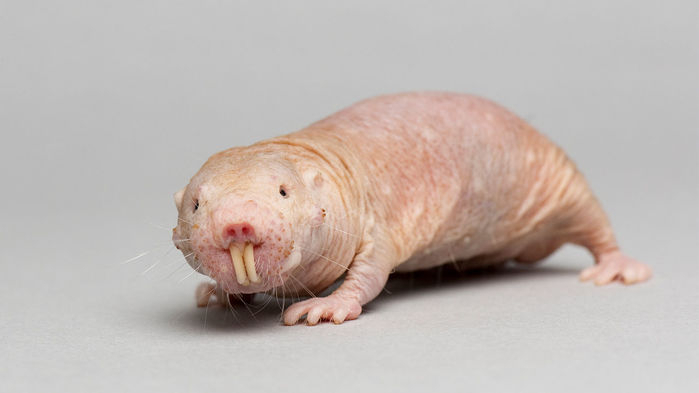
Naked mole rats have higher survival chance over other species with features including rare chances for cancers, resistance to certain kinds of pain, and longevity for 18 minutes without oxygen, which have surprised many scientists.
The first laboratory study of the life history of thousands of naked mole rats has found that the risks of death do not increase with old age.
Rochelle Buffenstein, a comparative biologist has studied the rodent for more than 30 years and has recorded the life history of animals in his possession. Her records included the date of birth, death, and reason of death or supplying animals to other researchers for studies.
Caleb Finch, a biogerontologist at the University of Southern California in Los Angeles said, "This is remarkably low mortality. At advanced ages, their mortality rate remains lower than any other mammal that has been documented."
The naked mole rats are burrowing rodents with wrinkled, pink skin and large protruding teeth that live in large subterranean colonies. They show lesser signs of aging and lives longer lifespan than rodents of similar size. While laboratory mice live up to 4 years in captivity, the naked mole rats have survival history of more than 30 years. The female rats even stay fertile at that age.
Buffenstein found that the mole rats had more than one in 10,000 chances for death due to age after it reaches its maturity. The rats would remain the same for rest of its life after maturity in its 6 months of age.
It questions the Gompertz law which found that the rate of dying risk increases exponentially with age. Human's chance of death doubles in every eight years and all most all mammals follow varying proportions of death rates with their age. Benjamin Gompertz, a British mathematician created the theory in 1825.
Bufferstein said, "To me this is the most exciting data I've ever gotten. It goes against everything we know in terms of mammalian biology."
Studies find that naked mole rats have very active DNA repairs and high levels of chaperones proteins that help other proteins fold correctly. This could reduce the physical damage due to age.
However, Caleb Finch, a biogerontologist at the University of South California who didn't involve in the research says that more cautions need to be taken against overinterpreting the data. Most animals in the research labs were killed or moved to other labs and less than 50-mole rats have live past 15 years of age.
The oldest animal currently living in Buffenstein's lab is just 35 years old. Finch argues that more numbers of longer aged mole rats could ensure better evidence for the research findings.
Buffenstein stated: "If you look at any rodent aging study, 100 animals is all you need to see Gompertz aging. Here we have 3000 data points and we're not seeing it."
Other researchers say the need of looking into the conditions of the naked mole rats after 20 or 30 years.









